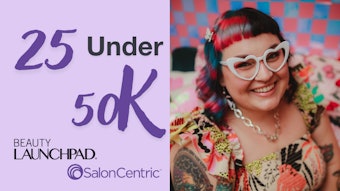
Years of conditioning have convinced beauty pros that they need to sell professional products to be successful, yet many struggle to generate that aspirational 20%, or even a modest 10%, of their income from retailing. For all the advice about presentation, persuasion and incentives, what’s holding you back from doing more?
For the purpose of this discussion, let’s talk about retail in general and not specify the quality or exclusivity of any particular beauty product. The basic argument goes something like this: Your clients need X, and they’ll buy it somewhere, so why not from you? That’s a fair question to ask, but why stop there when we should also ask:
• Did you enter this industry to perform services or sell products, or both?
- At what point does your salon business become more beauty supply than beauty services?
- Does it make sense to maintain products on your shelves when clients can easily source them and often at lower prices?
State boards authorize licensees to provide beauty services for compensation. Retail sales get authorized by a different state agency altogether. Does any state board regulate access to “professional use only” products as a perk of licensure? Not to my knowledge, although this New Jersey law makes an effort. Federal regulations focus on the labeling requirements for cosmetic products; the FDA does not grant beauty pros any consideration for their use.
For the most part, manufacturers and distributors control access to products despite their claims about fighting diversion. Some require licensure, and others require a formalized relationship that includes training and a commitment to using only that brand. Most beauty supplies have a license to operate as a salon to justify the presence of “professional use only” products. Never mind that the space occupied by those products and the income they generate dominate the salon services portion. That some salons transition completely away from providing services to producing their own retail products signifies this shift in priorities.
Here’s five reasons retailing beats providing services:
- Products are not people and easier to manage. They don’t have wants, needs, opinions, feelings or rights. Products can be discounted, donated or discarded. Some may spend months, even years, waiting in a box or sitting on a shelf collecting dust. That being said, treating people like products generally does not end well regardless of which role in the business/customer relationship you play.
- Products are easier to price and don’t need to be compensated. Products get marked up a variable amount, but employees need to be compensated legally no matter how many services performed or products sold. If you work alone, there’s no need to concern yourself with wage and hour compliance, payroll processing, employment tax payments and filings, discrimination and harassment, workplace safety, or any of the many potential pitfalls.
- Products can be available to customers 24/7. While beauty pros worry about filling their schedules with appointments or finding time for clients in a filled schedule, you can sell products online any time, day or night, with no personal interaction whatsoever. Because retail customers don’t make individual and exclusive demands on your time, multiple sales can happen simultaneously. In contrast, providing services to multiple clients does not meet client expectations for personalized attention. Beauty pros expecting to increase revenue by adding retail during every service ignore the fact that their schedule still limits retail potential to the number of clients served. Moreover, the time interval between salon visits may not be long enough to make subsequent purchases necessary.
- Products don’t require any specialized equipment, skills or training to sell. More than likely, your salon already has point-of-sale software to process payments and track inventory. Instead of investing in perfecting your technical skills, you can focus on hot trends in beauty products. Even if a customer wants a product demonstration, that information can be found on the manufacturer’s website or social media platforms in the form of instructional videos. In the hands of the customer, any poor performance can be blamed on the customer either choosing the wrong product or using it incorrectly. Unlike a client disappointed in the results of a service, a dissatisfied customer can return a product and be refunded without costing you time for a redo.
- Products can be sold through affiliate, associate or influencer marketing. Your initial recommendation may persuade a client to purchase a particular product directly from your inventory, but there’s no guarantee that subsequent purchases will happen or benefit you if they do. Avoid the work and expense of managing product sales by partnering with brands or distribution platforms that will handle all the operational aspects and pay commission for your referrals. Reach more potential customers and offer a greater variety of products without a physical storefront or inventory.











